Hello and welcome!
This past week, I have been in Rome to attend the Synod on the Amazon, but I want to begin by sharing with you several events that took place in Boston before I left.
Wednesday evening, we hosted our first Connect-Boston event at the Cathedral of the Holy Cross, which brought together university students and young professionals from the area for an evening of networking and inspirational talks. The event was organized by Father Eric Cadin and our Office of Campus Ministry, in conjunction with other ministries and organizations of the archdiocese.
The event began with a dinner at Cathedral High School, followed by talks in the cathedral itself.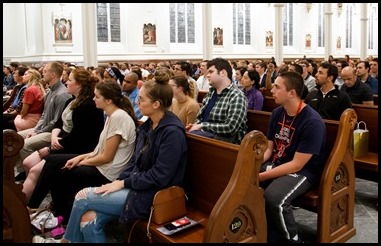
There, the young people heard from Curtis Martin, the founder of the Fellowship of Catholic University Students, better known as FOCUS, and Jennifer Baugh, the founder and national executive director of the group Young Catholic Professionals.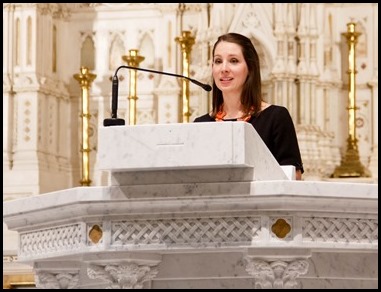
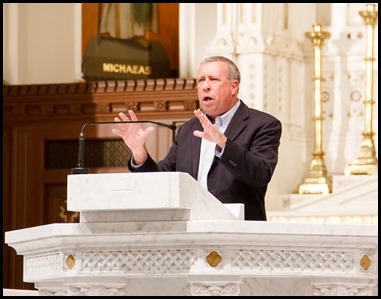
After the talks, everyone broke up into different panels based on areas of interest — such as business, communications and health care — at which professionals in the different disciplines witnessed to their lives as Catholic professionals and their sense of vocation and mission.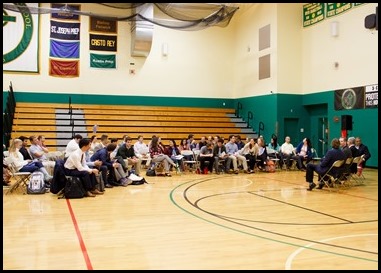
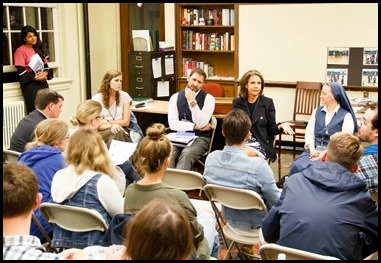 At the end of the evening, I gave a final keynote talk to the young people, and the event concluded with a Holy Hour and Eucharistic procession.
At the end of the evening, I gave a final keynote talk to the young people, and the event concluded with a Holy Hour and Eucharistic procession.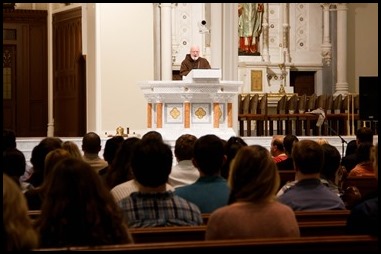
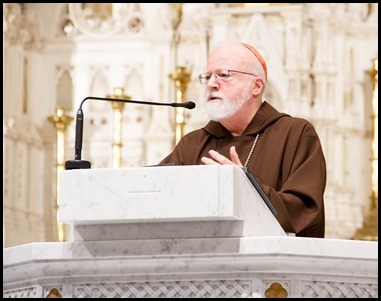
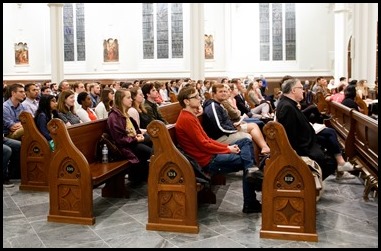
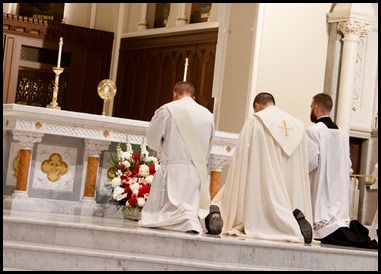
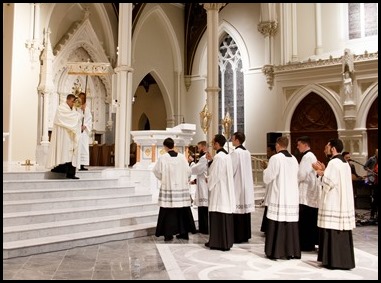
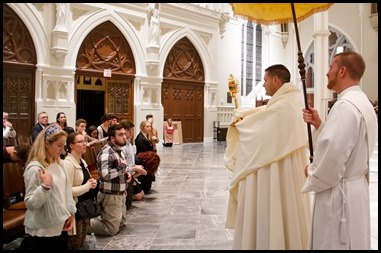
It was a very successful evening. I believe there were as many as 800 students and young professionals in attendance. We are so grateful to the many young people who came out to attend and those who participated in the panels for being available to share the testimony of their lives with these young adults.
Thursday, the Missionary Childhood Association sponsored our annual Mission Education Day at the Pastoral Center. The gathering brought together students from many different Catholic schools in the archdiocese for a day of talks and activities centered around the call to be missionary disciples.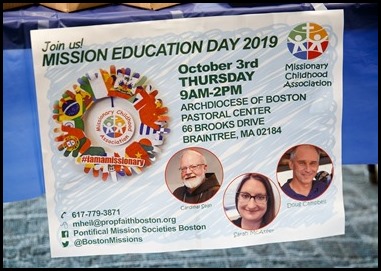
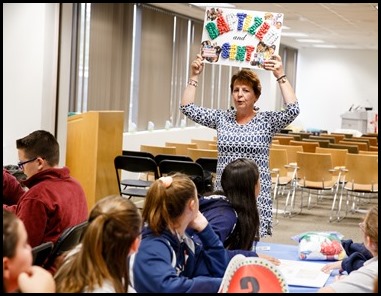
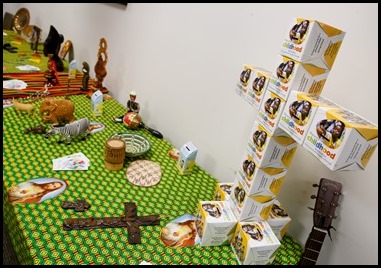
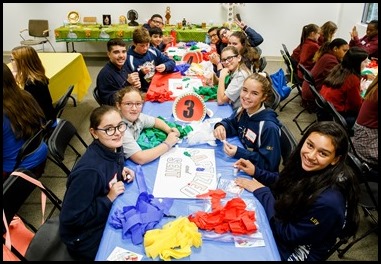
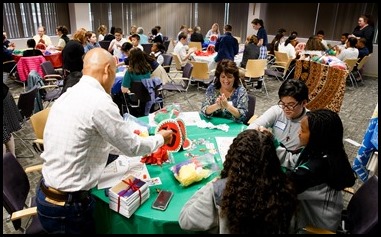
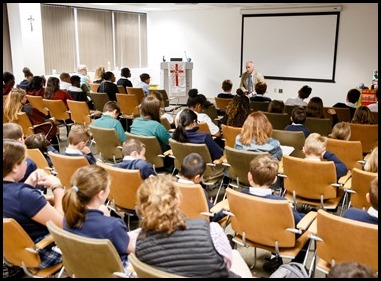
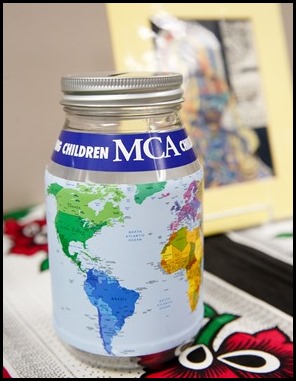 I joined the group for a morning Mass in the Pastoral Center chapel.
I joined the group for a morning Mass in the Pastoral Center chapel.
I celebrated the Mass for Evangelization and, in my homily, I reflected on our mission to be evangelizers and to carry the Good News to the ends of the earth.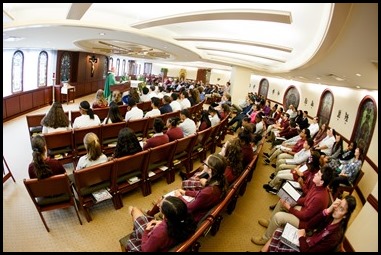
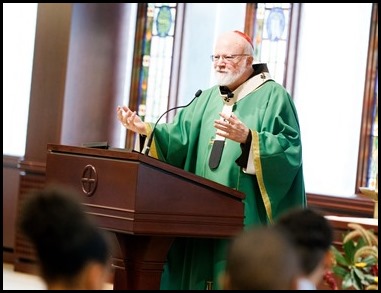
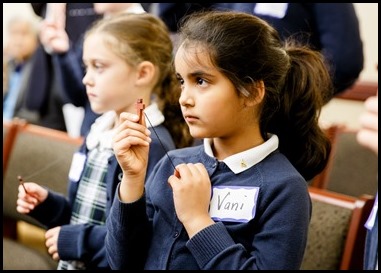
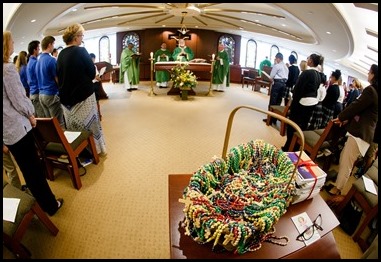
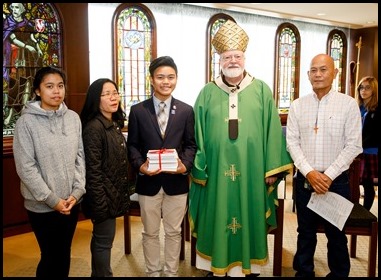
In fact, Maureen Heil, our director of programs and development for our Pontifical Mission Societies who organized the event, was leaving the next day on a mission trip herself. She is currently giving lectures in Australia, and she will then go on to visit the Diocese of Mendi in Papua New Guinea. That is a place that is very dear to me, since that is where many of my fellow Capuchins from the Pittsburgh Province are working.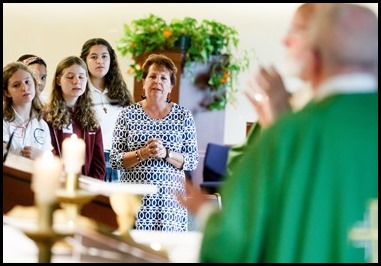
In my homily, I spoke to the young people a great deal about our mission in Papua New Guinea and the impact that the faith has made on the people there. The announcing of the Gospel was such a force for good, making the light, love and salvation of Jesus Christ present in a part of the world that had never enjoyed the light of the Gospel.
That afternoon, I had one of my regular meetings at the Pastoral Center with those priests who have been ordained in the last five years. With the large ordination class of last year, the group has grown considerably and now is about 40 priests.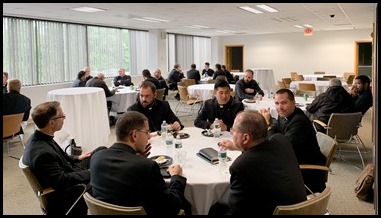
As always, we began with a meal and time of discussion, followed by prayer together. In our gathering, we talked about sacramental practices and the upcoming Synod on the Amazon, as well as a number of other topics the priests raised.
Though I was unable to attend, I also want to mention that Saturday was our 11th Annual Social Justice Convention.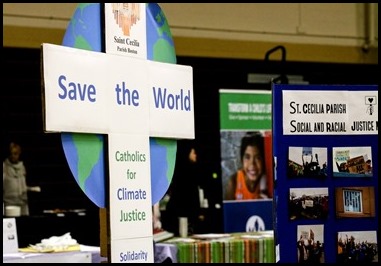
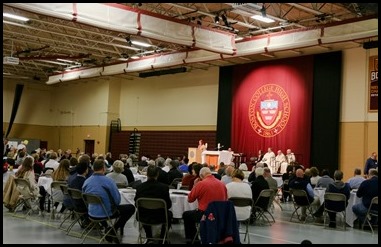
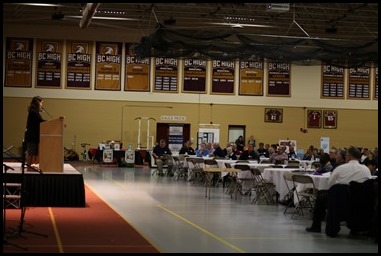
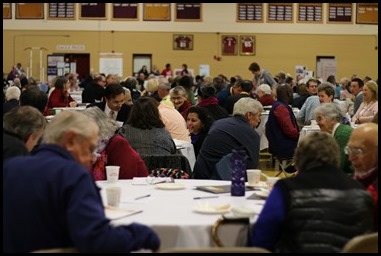 At this year’s convocation, they presented the inaugural Pope Francis Social Justice Award to Janine Carreiro of Massachusetts Communities Action Network.
At this year’s convocation, they presented the inaugural Pope Francis Social Justice Award to Janine Carreiro of Massachusetts Communities Action Network. 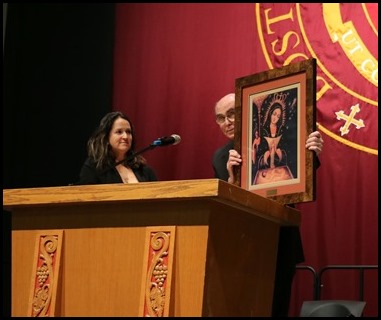
I was happy to hear that the convocation was, once again, a great success. Since social justice is a constituent of part of evangelization, we are happy that so many people responded to learn more about the social gospel of the Church. We are so grateful to Pat Dineen, Father Bryan Hehir and all those who work so hard to prepare the Social Justice Convocation every year.
Thursday evening I left for Rome to be there in time for the consistory for the creation of new cardinals. 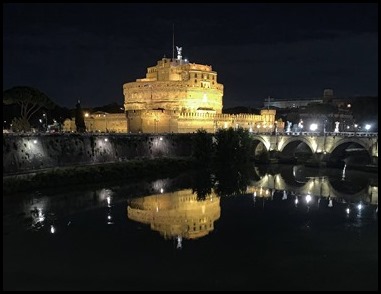
This trip was my first chance to see the sculpture now standing in St. Peter’s Square that depicts refugees and immigrants from many nations standing together on a boat. 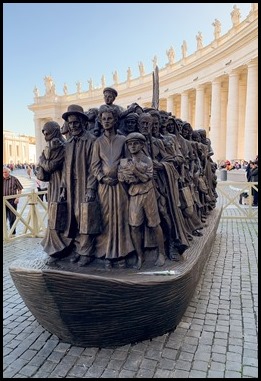
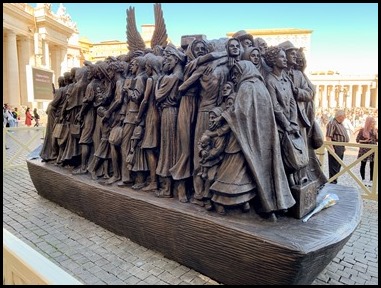
This piece of art is a very poignant reminder that we live in a world full of refugees. There over a million refugees in the world today, and the Holy Father is challenging people to open their hearts to help people fleeing from violence, war and oppression.
The consistory itself was held Saturday afternoon in St. Peter’s Basilica.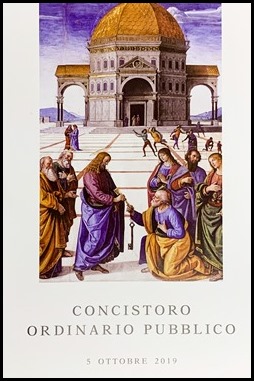
At this consistory, there were 13 new cardinals, over half of whom are from religious orders and many of them have connections to the missions. This is both Extraordinary Mission Month and the month in which the Synod on the Amazon is being held, so it very much fit in with the theme of a missionary Church.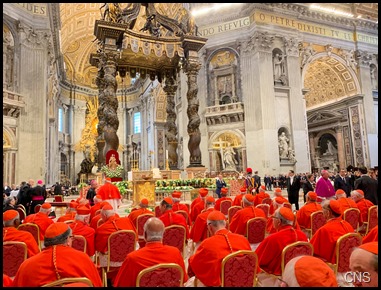
Among the new cardinals is Cardinal Fridolin Ambongo Besungu, a Capuchin from Kinshasa in the Democratic Republic of Congo, as well as Cardinal Jose Tolentino Calaca de Mendonca of Portugal, who is the Vatican archivist and librarian. I have known Cardinal de Mendonca since he was a professor at the Catholic University of Portugal.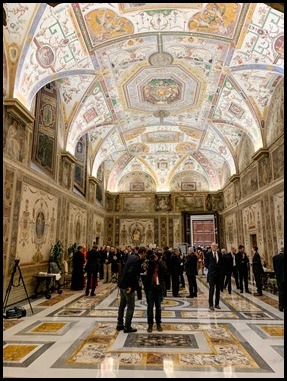
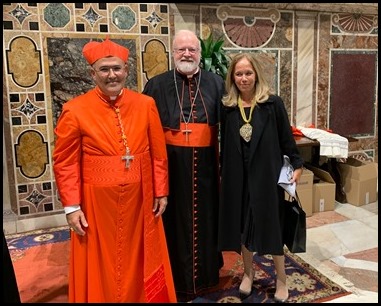
With Cardinal de Mendonca and Isabel Gil, the rector of the Catholic University in Lisbon
I also took a picture of the Portuguese Ambassador because I thought he had a very interesting outfit!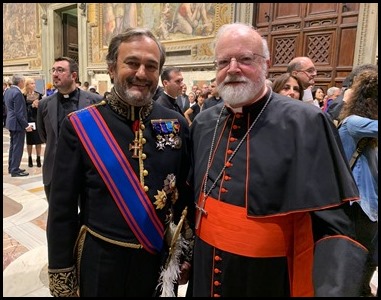
At the consistory, I also met Count Agostino Borromeo, from the family of St. Charles Borromeo, who is General Governor of the Order of the Holy Sepulchre.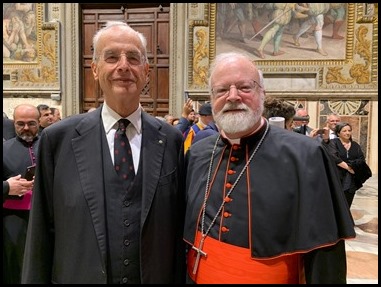
As I always like to do, one evening I met for dinner with the priests and seminarians of Boston who are in Rome. Among those who were with us were Father David Barnes and Father Daniel Hennessey, who were in town for the diaconal ordination of Deacon Dennis Nakkeeran, who was ordained the day before in St. Peter’s Basilica by Bishop Deeley along with the other seminarians from the Pontifical North American College.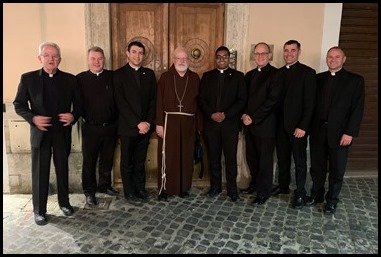
Another evening, I had the joy of being reunited with one of my former permanent deacons, José Olivares and his wife, Patricia. When I was a priest in Washington, Cardinal Hickey gave me permission to start a diaconate program in Spanish, and they came out of that program. Cardinal Hickey was so gracious that, when I was named bishop, he invited me back to have the ordination of the deacons I had trained. This month marks the 35th anniversary of that ordination.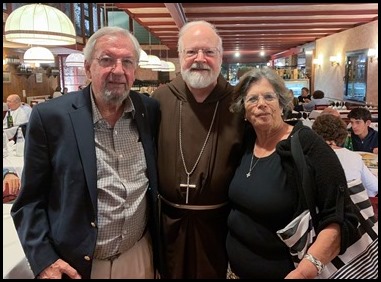
Since that time, José and his wife have returned to Chile, where they are still very active in ministry. They happened to be in Rome for a parish pilgrimage with their pastor and a number of his parishioners from Santiago, Chile. So, after 35 years, we were able to get together and have dinner! It was a great joy.
I also had an opportunity to meet with Polish Ambassador to the Holy See Janusz Kotanski, and Minister Mikolaj Pawlak, the recently named Polish Ombudsman for Children. It was an opportunity to speak about an upcoming conference in Poland to be run by the Pontifical Commission for the Protection of Minors.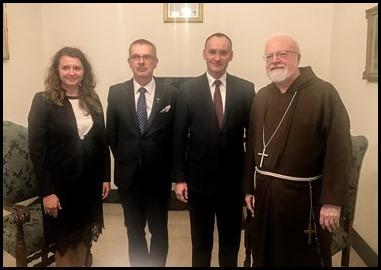
Sunday was the opening Mass for the Synod on the Amazon, and on Monday we gathered for prayer followed by a procession from St. Peter’s Basilica to the audience hall.
There were indigenous people from the Amazon region carrying a canoe and a number of other symbols.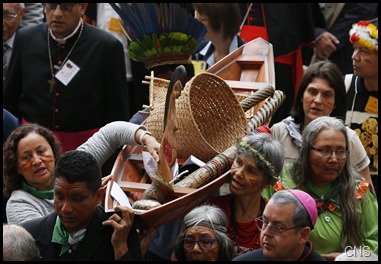
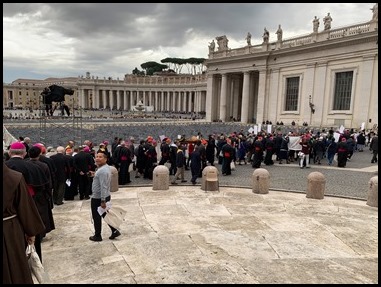
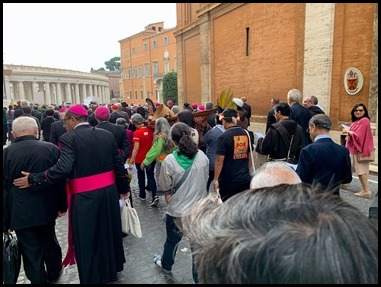
They also carried placards with pictures representing people who have been murdered in the region for their social justice work. 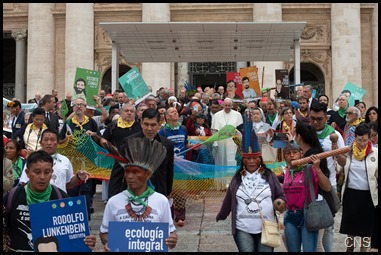
Of course, the most well-known of those to many in the U.S. is Sister Dorothy Stang, SND, who was killed because she was defending the indigenous people and their rights to the land. Following the procession, those placards were placed at the front of the Synod Hall.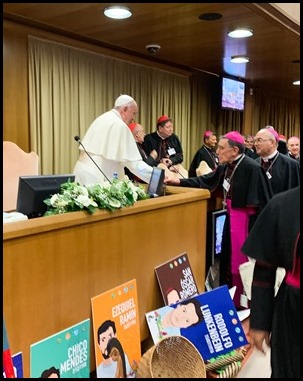
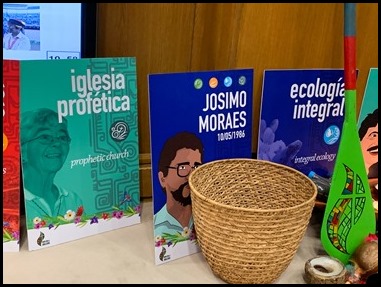
On Monday afternoon and Tuesday there were interventions by different participants in the synod. I made one intervention talking about my experience in Guatemala as the visitator for the seminaries there.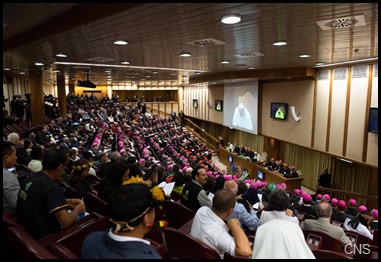
One of the seminaries I visited, Our Lady of the Assumption in Guatemala City, was several hundred years old. But, when I arrived, the rector (who is now a bishop in Venezuela) told me how happy he was because, for the first time in their history, they had some indigenous students entering the seminary. Now, bear in mind that Guatemala is probably one of the countries in the world with the largest percentage of indigenous people.
After my visitation to that seminary, and being surprised that after several centuries they were only beginning to get indigenous vocations, I went to a new seminary in Verapaz, which was established exclusively for indigenous seminarians. I had to speak to them through interpreters because they did not speak Spanish.
It was very under-resourced (for example, the seminarians’ families had to bring food for them) and, despite there being a large number of seminarians, a couple of years later it closed. I was very sad because the indigenous seminarians I had met at the major seminaries in the capital were like fish out of water. I had seen in the Verapaz seminary an opportunity to train indigenous priests in their own language and in their own cultural context. I felt badly when the seminary closed because I knew those seminarians would never be able to attend a different sort of seminary.
Because one of the themes is the terrible shortage of priests in the Amazonia region, I was trying to stress that, if we want to have priests in that area, we are going to have to make sacrifices to have people who can promote vocations and accompany and train seminarians in their own milieu and their own languages.
On Thursday, we began with what they call the “círculos menores” (“small circles”), which are small group discussions according to language groups.
The synod is being conducted almost entirely in Spanish and Portuguese, which is wonderful because since practically everyone there speaks either Spanish or Portuguese, it avoids the need for extensive translation.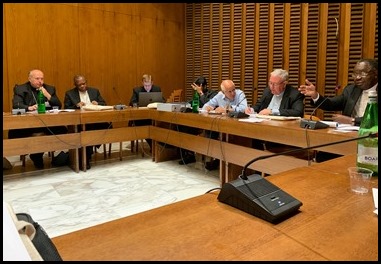
I was assigned to the English and French-speaking group, which was very interesting for me because many of the participants in this group are from the Antilles Conference, where I was an observer for almost 10 years when I was bishop in the Virgin Islands. We also have some indigenous people from Guyana and Suriname with us in that group.
One of the things that the Holy Father held up in his comments was that he asked us to look at the problem of violence in the region. Not only the kind of violence symbolized in the pictures of all those who have been killed, but also understanding the violence to the forests themselves and its effects on the people who are there. It is certainly something that we are going to be hearing a lot about in the course of the synod.
There has also been a lot of talk about the lack of priests. An indigenous woman from Guyana in our group told us that there are some villages where a priest comes only once a year. She said they have laypeople performing baptisms, presiding at weddings and distributing communion. In fact, she said she was baptized by a layperson in her village.
Certainly, one of the issues we have to deal with is the scarcity of ordained ministers in the region and the great need to provide for the sacramental life of the people and their formation. But despite the impression that is being given in the media, the synod is not some sort of a referendum on priestly celibacy.
There is a great missionary spirit and sense of solidarity amongst the participants. It has been a fascinating experience, and I am very grateful for the Holy Father’s invitation to be a part of the synod.
Until next week,
Cardinal Seán
